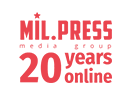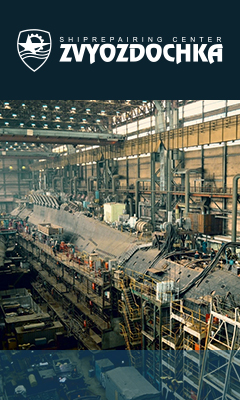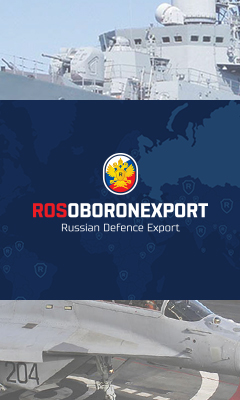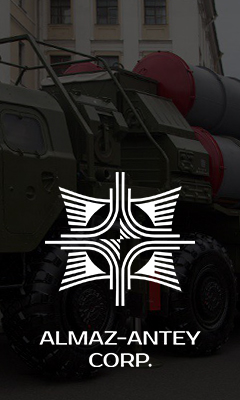Well, our major achievement is a structure capable to serve the concern and its affiliates. Kalashnikov includes not only IzhMash. It is boats and bulkers built on our shipyards, unmanned aerial vehicles, and companies producing, say, military uniform. We have built a structure that effectively cooks up and practices promotion methods for our products. Second, we launched platform that is available in two languages and that brought us great success by the yearend. And third, we tried to develop new approaches for the defense industry sector: I mean video releases, bilingual nature of communication. And I think we have managed to implement everything we claimed for in the last year.
Your widely known background is the Rambler experience. What did you took from there, I mean working procedures, staffing, and what did you have to make from scratch?
Rambler is a school where I had a change to get new knowledge. It gave me an insight of how media is arranged, how to create new projects, how journalists work. Luckily, I learned how editorial staff work, how to communicate with reporters and what language to use, how to facilitate their work and how to ‘pack’ the news you want to publish. Another thing is people, my team; some of them came here along with me.
I faced some problems here as I had never worked in the military area. I’d never contacted military people, had no idea of specific issues and products that the company produces. The bigger problem, however, was not my but rather all others’ unawareness of how we would work.What was the process of your personal acquaintance with the company’s products, and how other members of your team coming from other industries learn?
No one has come to me from the defense industry yet. Basically, they all are from media, sport journalism, newsmakers. Fortunately, among Kalashnikov’s staff there are real polyhistors who help us much. For one, Maksim Popenker. There are some guys from technical marketing who can handle weapons well and feel at home there. They’re pretty good on camera talking about a weapon system or a drone, and our job is to find a ‘package’ to broadcast that material in media.
It appears that learning of specific subjects is a natural process within a stream of daily activities, without any strictly built system?
Indeed, we did initiate and had some briefings with technical marketing service to get the essentials. We learned about safe handling of weapons, a terminology unacceptable in communications. At first we asked for advice all the time, and when started to record the content, we learned during the work. We’re still learning, after all, with every new filming session.
So, Kalashnikov Media in figures: what audience you have managed to gather so far, what is its profile (to compare, data on Mil.Press outlets)?
Since the project launch in September 2017, over 1.77 mln unique users have visited the Kalashnikov Media website, total page views amounted to 9.71 mln. On the average, users spend almost two minutes on the site, the scroll reach is 3.51. Male audience accounts for 76.1% of our traffic. Age of the visitors varies: 25.6% are 25-34; 19.9% are 35-44-y.o. people; 23.1% are 45-54-y.o. people. 3.83% of traffic falls upon minors, 6.15% - on the youth of 18-24-y.o. Visitors elder than 55-y.o. account for 21.5% audience.
The main question that arises when visiting the Kalashnikov Media website is what kind of people the project is tailored for? How do you figure the target audience to yourself?
The audience is still formed and will change much in the future. Our core is the people who are all about weapons, while some may never handle them. There is a fair bit of hunters as well. There are people fond of industry development, and specifically Kalashnikov. Sure, we understand we need new audience to promote civil-use products, such as motorbikes, clothes, sporting weapons.
This year, we tried to work on sports, particularly, biathlon, and noticed a huge interest. Today, biathlon stands second or third in the most popular sports in Russia, competing with ice hockey. We understand that being a manufacturer of biathlon rifles we have every reason to develop this sector in media. Finally, the major sports titles took our content. The hypothesis proved itself.
Then add practical shooting. Now it is not popular enough, since they cannot show it to make eye-catching yet. Then add audiences not related with small arms. Most likely, it is car racing and motorsport, as the group produces motorbikes, too.
Now we’re redesigning Kalashnikov Media with due account for the new categories. We’ll invest in the radically new audience connected to cybersports. These are people of ‘12+’ category we want to understand that Kalashnikov is something more than just an AK rifle.
Being rebranded in 2014, Kalashnikov took a new slogan, "Weapons of Peace". Do you still use it?
At that point, perhaps, it was the only clear symbol of what the group was. Today, in 2018, we’re conscious that the diversification program needs a new communication message. We often use an informal slogan, "More Than AK".
We’re coming at an assertion that Kalashnikov Media is mostly a story of the business diversification towards new civil products, rather than image-making in front of the company’s traditional clients like defense ministry and other security agencies?
Kalashnikov Media is an attempt to reevaluate the trend of conversion toward the civil markets. Having started here, I understood that the brand no longer needs a traditional promo. It is known all across the globe. But few are aware that Kalashnikov is more than just an AK rifle.An ambitious aspiration to tell about that kindled an idea of Kalashnikov Media. We’re happy to go beyond the concept of a corporate website. And now, if our colleagues from defense companies come and offer their content to be posted on Kalashnikov Media, or to make a common special project, we’ll say yes happily.
Well, I agree that people who like shooting or learn weapons might get into motorbikes, military-styled outfit, or drones. But what beats me is how such an audience can be connected to civil shipbuilding, which is also promoted on Kalashnikov Media.
Well, civil shipbuilding came to us very recently. We’ll give a separate section to this subject in an updated version of Kalashnikov Media.
Speaking of business issues, did launching of Kalashnikov Media have an impact on the company’s sales?
As of cooperation with security agencies and foreign partners, our videos are actively used at the talks.
In the b2c sector, we’ll revise the online shop concept and use much ‘product placement’ inside videos, including the option to buy something directly from the clips. Sure, the task is challenging. First you need to feel your audience, and then try to work with it.
What KPI do you think can be used to assess effectiveness of media on security agencies, in fact, in b2g sector? How a defense company’s press secretary may understand his information reaches the relevant people?
It seems strange to request KPI on sales and b2g-contracts from a press secretary. Some contracts we sign are preceded by half-year or even year-long negotiations. And no one knows what motives the client initially had.
Our video with boats was displayed at the Army forum all days long. I think everyone saw it. Same things with the flying motorbike. I mean, do not hesitate to show your technologies, especially when they were designed by own initiative. You should offer the audience to see your product.
Hesitation is one thing, but we work next to state defense issues, state secrets, and all publications must be done very cautiously. How does it work in your company, I mean approval of materials before posting on the site?
Each material has its client, the product manufacturer. First we agree with him whether everything is correct, no mistakes, and so. Then we present the material to the director general, and after approval we publish it.
How long does this cycle take?
From several hours to a day. We try to publish six videos per week and if we fail to keep up to these rates, we could not do anything. We work in media and understand that today promptness is a key factor. It is good to know that our director shares this concept. I know companies where approval may take half a month.
To what extent do the press services of the group’s affiliates depend on you?
Our affiliates do not have press services, we’re alone.
You think it is effective?
I don’t think every factory should have a couple of idlers that need to be attracted or guided all the time. Breaking news or ‘tight corners’ happen once in a while, and I’m quite capable to contact colleagues in Izhevsk or Rybinsk and settle the issue. There’s no need to have full-time staff for such occasions. Everyone is online, no matter where.How many people work today in Kalashnikov Media, including cameramen?
Twelve.
Sounds impressive. Once you offered to post ads on the Kalashnikov Media website, which is quite unusual for an in-house outlet. Do you plan to get at least partial payback of the project by these measures?
Sure, we think of monetization. We learn advertisement formats and tools.
Who did you align yourself with when making Kalashnikov Media? Were there any examples?
With Red Bull, Tinkoff Journal.
What foreign weapons brands and arms promoters do you track?
Bright examples are Larry Vickers and the DemolitionRanch on YouTube. There are some American brands whose development I watch. They have much native advertisement, it’s their market feature. We do not have ambassadors of such level in weapons business.
How do you treat negative publications in media regarding your company? Are there any protocols for such cases? Who is to communicate, who is to publish disproof?
Some businesses really have scenarios and action plans for emergency situations. We always improvise. Monitoring, analysis, briefing, finding options, exercising, monitoring again.
To curtail negative, you should be aware of the media landscape: the quickest ones, links of references, different citedness and audiences. Second is a prompt contact with editorial staff. If the matter is international, we don’t hesitate to call foreign reporters. Normally, we make them correct the material or at least put references to some updates.Are there any specific aspects in working with foreign media, different from the Russian ones?
Thanks to work in Kalashnikov Group, I have acquired a wide experience of communication with foreign press. Sure, things go smooth not all the time. There’s a sort of informational tension between countries, many people treat us cautiously because of sanctions. However, we feel a great interest to us, which has increased over the last half year when we began to show we’re more than everyone thought. Each week we receive an invitation for joint work from AFP or CNN. Just like in our media, their ones are full of talented people. In the same way, they verify quotations and send facts for confirmation. Indeed, they may have a kind of a vector for presentation that we cannot predict, but generally we try to cooperate.
My understanding is that you work individually with foreign media, rather than mail out press releases?
We don’t mail out even amid Russian media. For every particular case we have a strategy. I understand that one media may be interested much, another may stay indifferent, and the third one may never be referred to. If we have news about other countries, we contact local media right away to offer the interesting material.
Is the work based on your initiative or you have a task ‘from above’ to support the company in media in a certain kind of activity?
Absolutely not, there’s no a wizard who comes every day to tell what to do.
With the benefit of experience acquired in Kalashnikov, what advice cane you give to promoters and press secretaries of defense companies?
Never fear working for defense companies or in a security agency. Don’t think that people in restaurant business or Vogue magazine ‘live’ online, but here things work differently. There’re no jobs, there’re people on those jobs.
How to promote products of your company if you’re alone, with no team or money?
We all know Kubanzheldormash (a machine building company known in media for ironical style of its official Facebook account – editor’s remark). Yes, the moderator sits there alone, with no team or money. Sure, this case has some monetization problems, but the fact itself that this company being generally renown is a credit for a single man.So you recommend to proceed from a distinctive content?
Content is still is the king. Do something authentic and find a ‘driver’ for that. Everyone has the same entry point and equal access. I mean Internet. When you come up with an unusual content, you win.
What about defense manufacturers? You think they should also switch from printed press and TV towards Internet?
For sure. What I recommend is to go online and translate content into foreign languages. When I could, I’d translate into Spanish as well. Just to speak with the audience using its language, at least through subtitles. We should use new promotion channels but not old-fashioned clichés, we should demolish the paradigm used by press secretaries of defense industries for years or decades.
To track media publications about the group, you use the Medialogia monitoring system. Could you specify for PR experts and directors what the value of this tool is?
Medialogia helps not only see who wrote about you, it provides analysis. Look, we all set goals for ourselves. For one, I want to build up number of publications by 30%, reduce negative level, expand coverage of federal media comparing to regional ones. I can’t do that without Medialogia, as it works out my hypotheses and can digitalize my work.
What other services do you use to arrange and analyze your work?
Well, at first it is monitoring by Google News and Yandex News, analytics inside social networks. We use Brand Analytics to assess negative attitude in social networks. We have Yandex.Metrika and Google Analytics connected.
What objectives do you have ahead for 2018?
We’ll focus on Kalashnikov Media to attract new audiences, try to work on new sections. There are many questions about cybersports. Everyone talks, but no one knows how to deal with it. Today, this audience is the most challenging to attract. We have to gain confidence and loyalty of people who "have grown in the net". We’ll definitely make several special projects, including some for the Army 2018 forum.
What should happen in the industry to let new corporate military-oriented media appear to compete you?
The question is not a certain company or a specific situation. Today we see a trend of ‘dressing’. Look how Russian regions fight for the ‘dressing’ of their images. Everything has become more client-oriented. So, defense companies will also have to become more open and learn to present themselves properly.Interview by Sergey Sochevanov
Earlier in 2018, Mil.Press Today interviewed Mikhail Potapov, director for firefighting systems at the Malachite Design Bureau; Oleg Pshenichny, CEO at MSS Group; and Pavel Plavnik, chairman of the board at the diesel-production plant Zvezda.
Ready to tell about your company’s business? Mil.Press Today will bring your message to the top officials of the military industry and the Russian Defense Ministry. Contact Us.





























